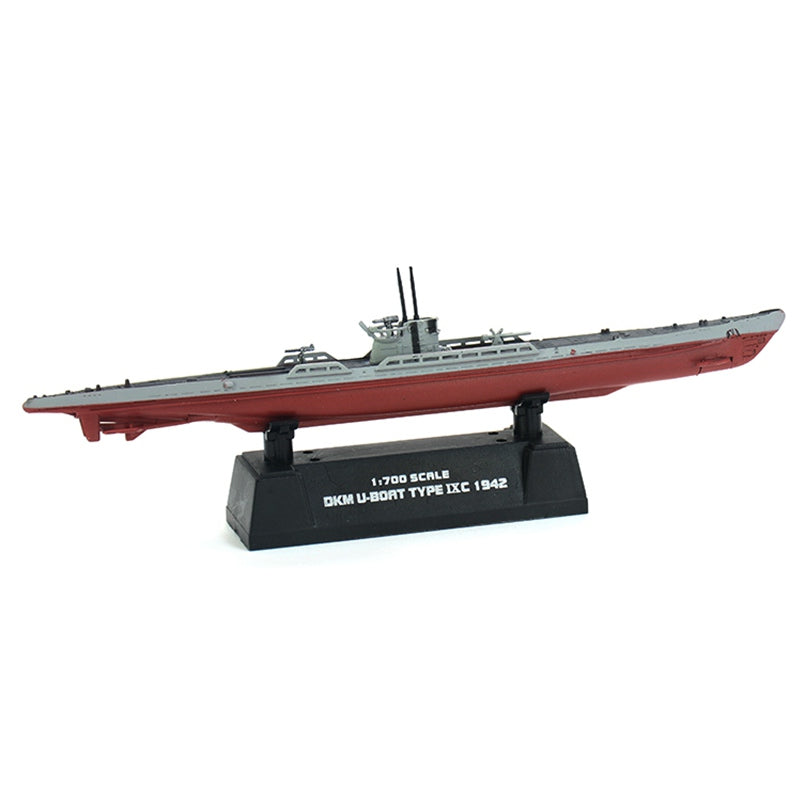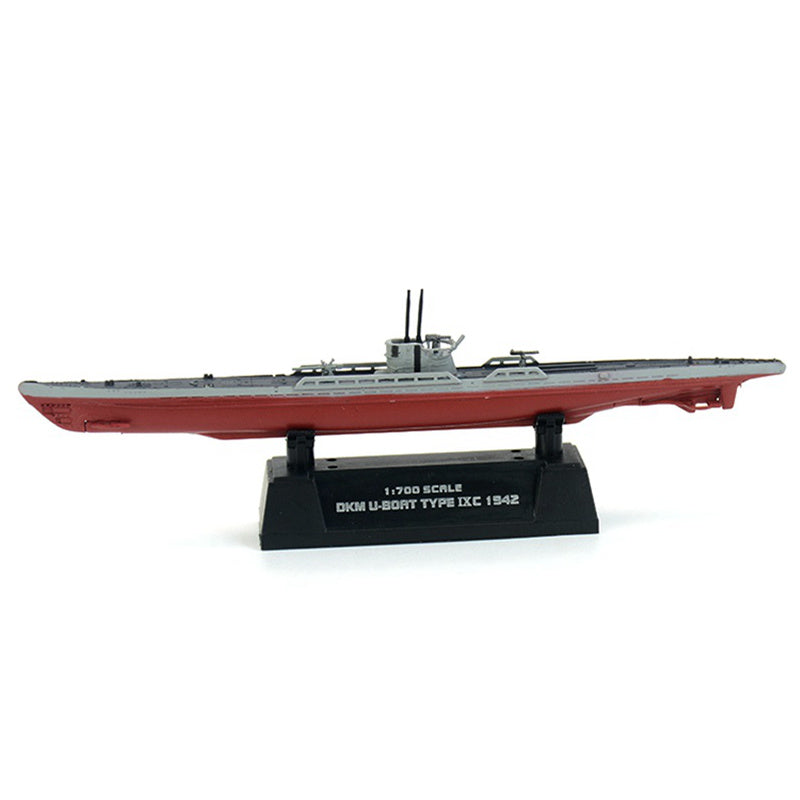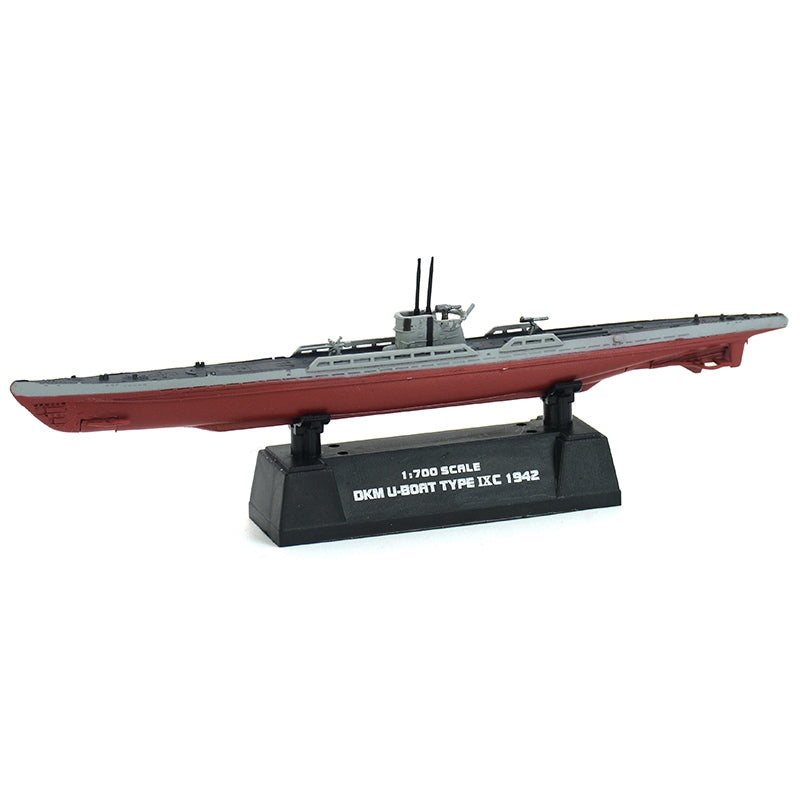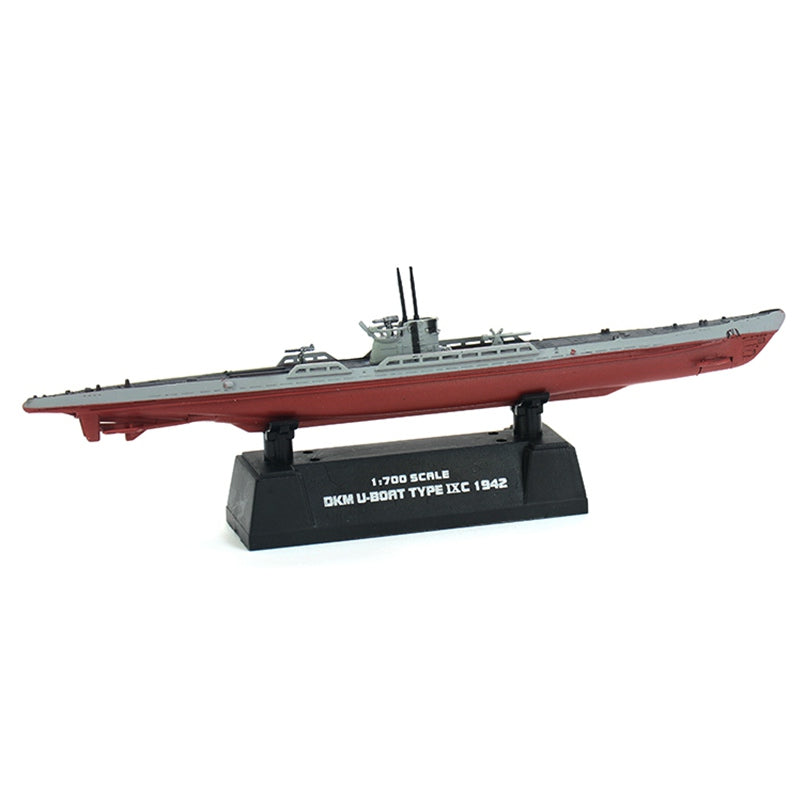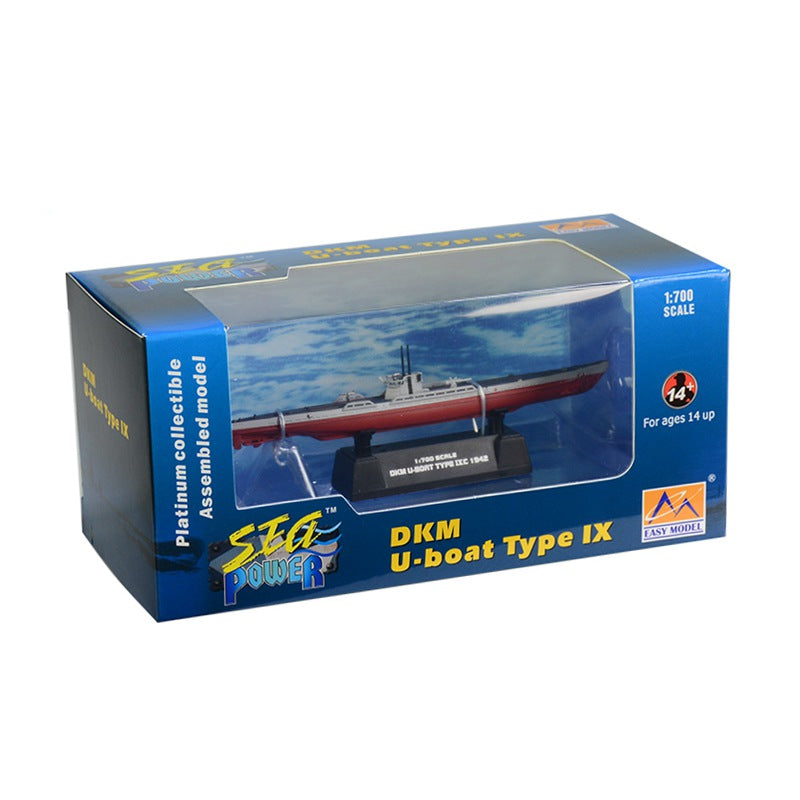old boy hobby
WWII German U-boat Type IXC pre-built 1/700 scale collectible plastic submarine model
WWII German U-boat Type IXC pre-built 1/700 scale collectible plastic submarine model
Couldn't load pickup availability
- pre-built and pre-painted, ready to display
- material: plastic
- scale: 1/700
- manufacturer sku: 37320
The Type IX U-boat was designed by Nazi Germany's Kriegsmarine in 1935 and 1936 as a large ocean-going submarine for sustained operations far from the home support facilities. Type IX boats were briefly used for patrols off the eastern United States in an attempt to disrupt the stream of troops and supplies bound for Europe. It was derived from the Type IA, and appeared in various sub-types. Type IXs had six torpedo tubes; four at the bow and two at the stern. They carried six reloads internally and had five external torpedo containers (three at the stern and two at the bow) which stored ten additional torpedoes. The total of 22 torpedoes allowed U-boat commanders to follow a convoy and strike night after night. Some of the IXC boats were fitted for mine operations; as mine-layers they could carry 44 TMA or 66 TMB mines. Secondary armament was provided by one 10.5 cm (4.1 in) deck gun with 180 rounds. Anti-aircraft armament differed throughout the war. They had two periscopes in the tower. Types IXA and IXB had an additional periscope in the control room, which was removed in Type IXC and afterward. These long range boats were frequently equipped with Focke-Achgelis Fa 330 rotor kite towed rotary-wing aircraft.
Type IXC was a further refinement of the class with storage for an additional 43 tonnes of fuel, increasing the boat's range. This series omitted the control room periscope leaving the boats with two tower scopes. As mine-layers they could carry 44 TMA or 66 TMB mines, though U-162 through U-170 and U-505 through U-550 (35 boats), were not fitted for mine operations. The only U-boat sunk in the Gulf of Mexico, U-166, was a Type IXC. U-505 survives at the Museum of Science and Industry in Chicago, and was completely renovated after being moved in 2004 to a purpose-built indoor berth.
--copied from Wikipedia

Share

